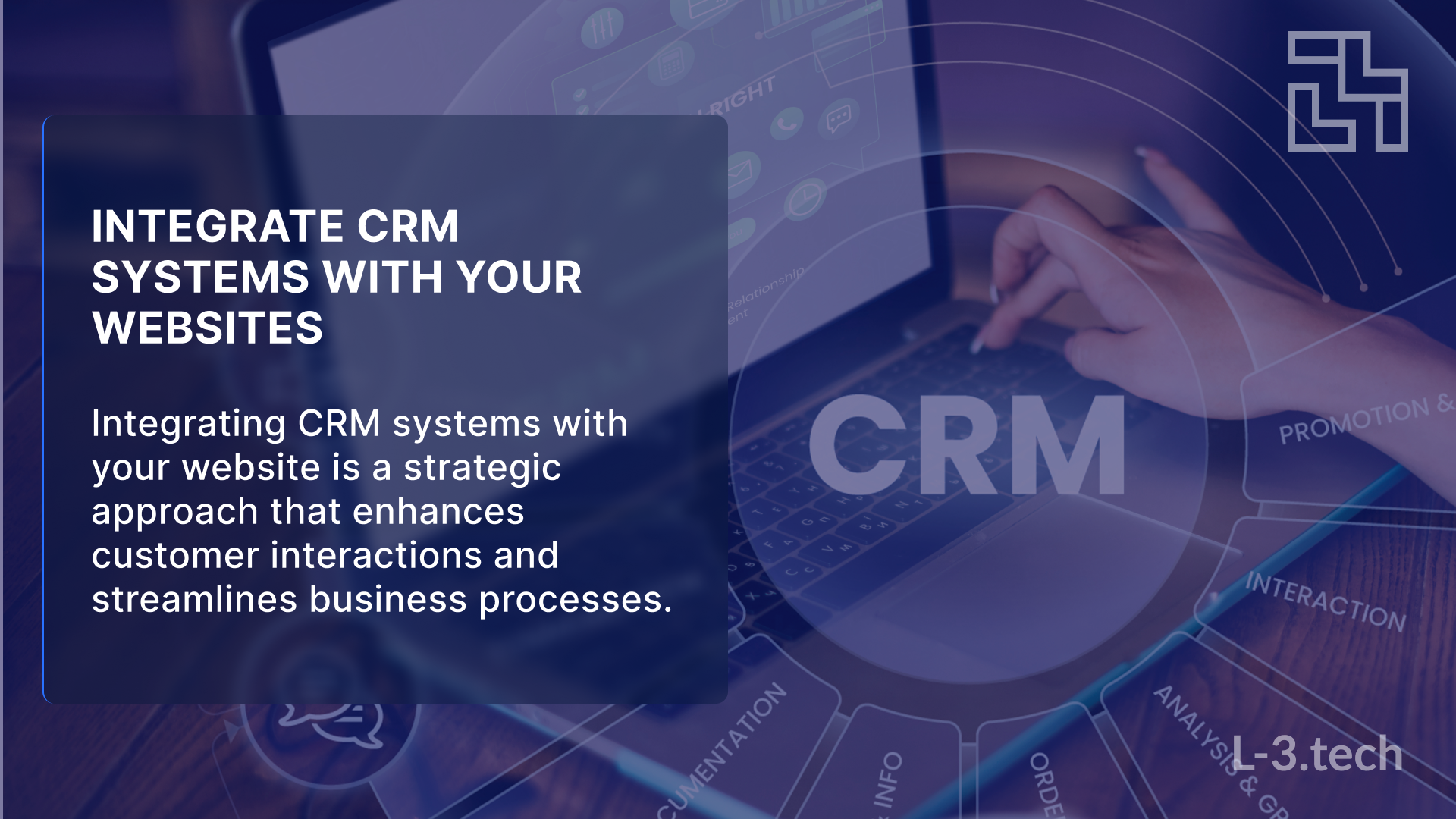Understanding CRM Systems
CRM systems are essential tools for businesses looking to enhance customer interactions and streamline processes. By integrating CRM systems with your website, you can improve customer experience and data management. This integration allows for real-time data updates and better communication with clients, ultimately leading to increased sales and customer satisfaction.
What is a CRM System?
A CRM system is software designed to manage customer relationships. It stores customer information, tracks interactions, and analyzes data, enabling companies to better understand their customers and tailor their services. With a CRM, businesses can automate tasks and improve efficiency, making it a vital tool for any organization aiming for growth.
Benefits of Using a CRM System
Using a CRM system offers numerous benefits:
- Improved Customer Service: Provides quick access to customer data.
- Enhanced Communication: Facilitates better interaction within teams and with clients.
- Effective Sales Tracking: Monitors sales and marketing efforts efficiently.
- Increased Productivity: Automates tasks to boost efficiency and profitability.
Types of CRM Systems
There are three main types of CRM systems:
- Operational CRMs: Focus on automating sales and marketing processes.
- Analytical CRMs: Analyze customer data to improve decision-making.
- Collaborative CRMs: Enhance communication between departments and customers.
Choosing the right type depends on your business needs and goals.
Popular CRM Software Options
Some popular CRM software options include:
- Salesforce: Known for extensive customization.
- HubSpot: Offers a free tier, making it accessible for small businesses.
- Zoho CRM: Budget-friendly with a wide range of tools.
How CRM Systems Work
CRM systems work by collecting and storing customer data in a centralized database, including contact information, purchase history, and interaction logs. This information can be accessed to provide personalized service and streamline tasks, maintaining organized and efficient operations.
Why Integrate CRM with Your Website?
Integrating your CRM system with your website is crucial for modern businesses. This integration allows seamless data flow between platforms, capturing leads directly from your website, and enabling you to track customer behavior and preferences. As a result, it leads to more effective marketing strategies and improved customer engagement.
Capturing Leads from Your Website
One of the primary reasons to integrate CRM with your website is lead capture. When visitors fill out forms, their information can be automatically sent to your CRM, ensuring no potential customer is overlooked and allowing for immediate follow-up, which increases conversion rates.
Enhancing Customer Experience
Integrating CRM with your website enhances customer experience by enabling personalized interactions based on previous behaviors. With integrated systems, you can provide tailored recommendations and support, improving satisfaction and fostering loyalty.
Improving Marketing Efforts
Integration allows for better tracking of marketing campaigns and effectiveness. You can analyze which channels bring in the most leads and conversions, refining your strategies over time and maximizing marketing ROI.
Streamlining Communication
Integrating your CRM with your website streamlines communication between teams by logging all customer interactions in one place, reducing miscommunication and errors and allowing better collaboration on customer-related tasks.
Real-Time Data Updates
With CRM integration, data is updated in real time across both platforms, ensuring that any changes made on the website reflect immediately in the CRM. This immediacy is crucial for timely decision-making and responses, enhancing operational efficiency.
Steps to Integrate CRM with Your Website
Integrating your CRM with your website involves several key steps:
- Choosing the Right CRM: Consider features, pricing, and scalability.
- Ensuring Website Compatibility: Check if your website platform supports integration.
- Using APIs for Integration: Connect the systems using APIs or plugins.
- Testing the Integration: Ensure everything functions smoothly.
- Training Your Team: Ensure everyone understands how to use the new system effectively.
Choosing the Right CRM
The first step in integration is selecting the right CRM for your business. Ensure the CRM aligns with your business goals and processes, considering user-friendly interfaces and customer support.
Ensuring Website Compatibility
Before integrating, check if your website platform is compatible with your chosen CRM. Most popular platforms like WordPress, Shopify, and Wix offer integration options. If your website is custom-built, you may need developer assistance.
Using APIs for Integration
APIs (Application Programming Interfaces) are powerful tools for integration, allowing different software systems to communicate. Many CRM systems provide APIs for seamless integration with websites, enabling advanced functionalities and customizations.
Testing the Integration
Once the integration is complete, thorough testing is essential. Check if data flows correctly between the website and CRM, testing various scenarios to ensure everything functions as expected.
Training Your Team
After integration, training your team is crucial for success. Provide resources and support to help them adapt to the changes, ensuring a well-trained team maximizes the benefits of integration.
Common Challenges in CRM Integration
While integrating CRM with your website offers many benefits, challenges can arise:
- Data Migration Issues: Plan carefully and back up data to prevent errors.
- Ensuring Data Accuracy: Implement validation checks to maintain data integrity.
- User Adoption Challenges: Provide training and support to ease the transition.
- Technical Difficulties: Have a skilled IT team to address compatibility issues.
- Cost Considerations: Budget for software, development, and training expenses.
Best Practices for CRM Integration
To ensure successful CRM integration, follow these best practices:
- Define Clear Goals: Identify objectives to guide the integration process.
- Involve Key Stakeholders: Gather input from team members for better insights.
- Regularly Review and Optimize: Continuously improve the system’s performance.
- Maintain Open Communication: Keep team members informed and encourage feedback.
- Document the Process: Keep records for future reference and new team members.
Conclusion
Integrating CRM systems with your website is a strategic move for any business. It enhances customer experience, improves data management, and boosts sales. By following the steps outlined and adhering to best practices, you can achieve a successful integration that transforms your business operations.




